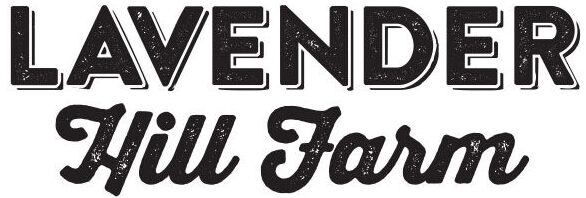How to Dry Your Lavender
By: Marissa Begnoche

Lavender is a lovely plant to have in your garden but it can also be used for so many things! If you want to harvest and use your lavender at home, the best way is to get the most use out of it is to dry it. For more information on harvesting lavender see our blog post here.
You don’t have to be an expert homesteader to dry lavender! After you’ve harvested your fresh lavender, take a handful of sprigs and organize them into a bundle with a stem diameter of about 1.5 inches. Next, take a rubber band and wrap it around the stems until secure.
Find an area in your home with good air circulation that is out of direct sunlight. This is an important step to prevent mold and fading of color and scent.
Hang your lavender so that the bud side is facing downward. This helps the oil concentrate in the buds and the stems to dry  straight. You can hang the bundles from ropes, nails, on a hanger in your closet, etc. Get creative! Our handy trick is to pull a paper clip through the rubber band and use that to poke through a hollow rope hanging from our drying shed rafters.
straight. You can hang the bundles from ropes, nails, on a hanger in your closet, etc. Get creative! Our handy trick is to pull a paper clip through the rubber band and use that to poke through a hollow rope hanging from our drying shed rafters.
Your lavender will be dry within 5-10 days if it is in the right conditions. To test if it is completely dry you can tap the bundle against a surface and check for falling buds, if they do not fall readily the bundle isn’t dry yet. My other little trick is to take a stem from the center of the bundle and try to bend it in half; if it’s a clean break the bundle is dry, but if it still has some bendiness it should be left longer as there is still moisture in the stems.
Once it is dry, you can either leave the bundle intact for decorating or remove the dried buds. For dried buds, set up your workspace at a clean table. Working over a fine-mesh sieve or (if you’re working on a  larger scale like us) an old window screen, hold the bundle by the bud side and roll it back and forth between your hands. The buds will fall onto the sieve/screen where you can shake out any dust or dirt and pick out leaves and stems. If your goal is to use your buds for cooking or baking, make sure to spend more time cleaning out leaves and stems.
larger scale like us) an old window screen, hold the bundle by the bud side and roll it back and forth between your hands. The buds will fall onto the sieve/screen where you can shake out any dust or dirt and pick out leaves and stems. If your goal is to use your buds for cooking or baking, make sure to spend more time cleaning out leaves and stems.
It is important to note that the use of your buds should be determined by the type of lavender you have (certain species do not work well for culinary use). If you aren’t sure what species you have, take a look at this blog post for help.
